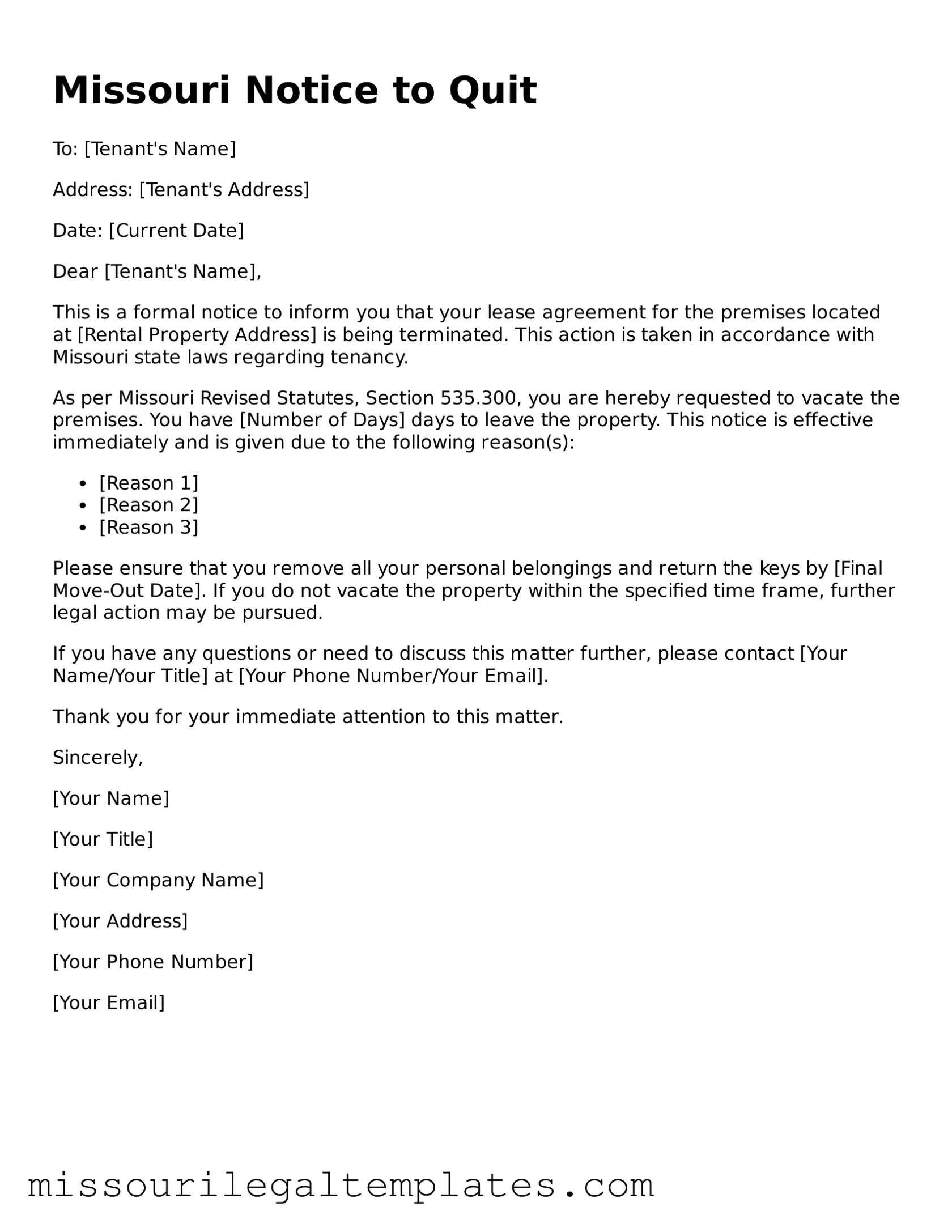Missouri Notice to Quit
To: [Tenant's Name]
Address: [Tenant's Address]
Date: [Current Date]
Dear [Tenant's Name],
This is a formal notice to inform you that your lease agreement for the premises located at [Rental Property Address] is being terminated. This action is taken in accordance with Missouri state laws regarding tenancy.
As per Missouri Revised Statutes, Section 535.300, you are hereby requested to vacate the premises. You have [Number of Days] days to leave the property. This notice is effective immediately and is given due to the following reason(s):
- [Reason 1]
- [Reason 2]
- [Reason 3]
Please ensure that you remove all your personal belongings and return the keys by [Final Move-Out Date]. If you do not vacate the property within the specified time frame, further legal action may be pursued.
If you have any questions or need to discuss this matter further, please contact [Your Name/Your Title] at [Your Phone Number/Your Email].
Thank you for your immediate attention to this matter.
Sincerely,
[Your Name]
[Your Title]
[Your Company Name]
[Your Address]
[Your Phone Number]
[Your Email]
